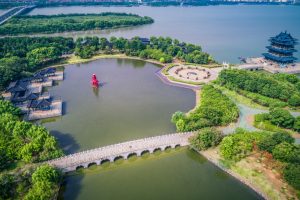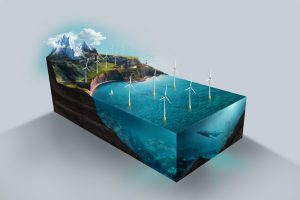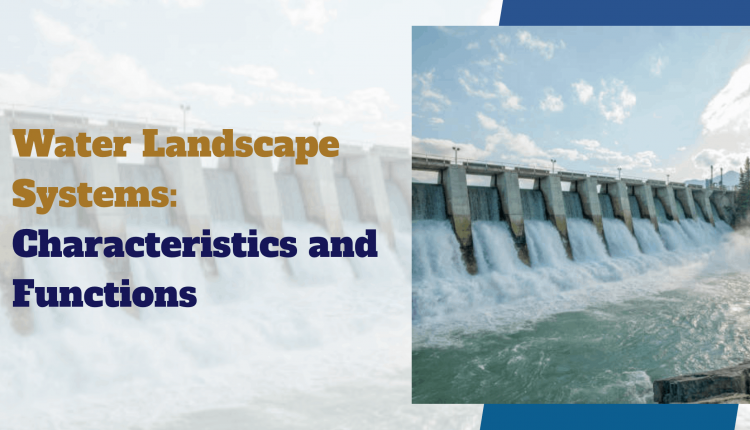Water Landscape Systems: Characteristics and Functions
Aquatic Mastery: Decoding the Power and Purpose of Water Landscape Systems
Water landscape systems have become increasingly popular in modern urban and suburban environments, not only for their aesthetic appeal but also for their numerous functional benefits. In this comprehensive article, we will delve into the characteristics and functions of water landscape systems, drawing insights from a compelling case study that highlights the transformative power of integrating water features into diverse settings.

Introduction: Embracing Nature in Urban Spaces
As urbanization continues to shape our cities, the need for green spaces that seamlessly blend with the environment becomes paramount. Water landscape systems offer a unique solution by not only enhancing the visual appeal but also fostering a connection with nature in the heart of urban areas.
Key Characteristics of Water Landscape Systems
1. Sustainable Design:
Water landscape systems are characterized by their sustainable design principles. Incorporating elements like rainwater harvesting and efficient irrigation, these systems minimize water wastage, making them environmentally friendly.
2. Biodiversity Integration:
One distinguishing feature is the integration of biodiversity. Ponds and water features provide habitats for various aquatic plants and animals, contributing to the overall ecosystem balance.
3. Aesthetic Versatility:
Water features come in various forms, from serene ponds to dynamic fountains. This versatility allows for customization, ensuring the water landscape system complements the overall design of the space.
4. Seasonal Adaptability:
The adaptability of water landscape systems to different seasons is a key characteristic. Whether it’s the vibrant colors of blooming flowers in spring or the tranquility of a frozen pond in winter, these systems evolve throughout the year.
Case Study: Transforming Urban Spaces with Water
To illustrate the impact of water landscape systems, let’s explore a case study involving a bustling city park. In the heart of the metropolis, a neglected area was transformed into a vibrant oasis using carefully planned water features.
The Challenge:
The city park faced issues of high temperatures, soil erosion, and a lack of greenery. Traditional landscaping methods proved ineffective in addressing these challenges.
The Solution:
A comprehensive water landscape system was introduced, including strategically placed ponds, cascading waterfalls, and native plantings. The design aimed to cool the environment, reduce soil erosion, and create a visually appealing green space.
Results:
The transformation was astounding. Temperature records showed a noticeable decrease, and the park became a haven for local wildlife. Visitors were drawn to the soothing sounds of water, creating a more enjoyable and relaxing atmosphere.
Functions of Water Landscape Systems
1. Temperature Regulation:
Water features act as natural coolants, lowering temperatures in urban areas, crucial for mitigating the heat island effect.
2. Erosion Control:
Strategic water placement controls soil erosion, providing stability to landscapes prone to degradation, and ensuring long-term environmental resilience.
3. Improved Air Quality:
Aquatic plants release oxygen through transpiration, significantly enhancing air quality in urban environments, and fostering healthier living conditions.
4. Enhanced Aesthetics:
Water landscape systems elevate space aesthetics, creating captivating focal points that capture attention, contributing to an engaging urban environment.
Conclusion: Embracing the Transformative Power of Water
In conclusion, water landscape systems go beyond mere aesthetic enhancements. Their sustainable design, biodiversity integration, and multifunctional benefits make them invaluable in transforming urban spaces. The case study presented serves as a testament to the positive impact these systems can have on the environment, highlighting their role in creating greener, more livable communities. As we move forward in urban development, incorporating water landscape systems should be a priority, not just for their beauty but for the myriad benefits they bring to our cities.
 Exploring water landscape systems has been fascinating! If you’re passionate about water management, join the “Sustainable Water Management and Resource Adaptation: Security and Energy Nexus” (SWMRA) Conference, in collaboration with Universite Paris Cite, from 12-14 November 2024. Dive into academic discourse and contribute to shaping a sustainable future.
Exploring water landscape systems has been fascinating! If you’re passionate about water management, join the “Sustainable Water Management and Resource Adaptation: Security and Energy Nexus” (SWMRA) Conference, in collaboration with Universite Paris Cite, from 12-14 November 2024. Dive into academic discourse and contribute to shaping a sustainable future.


